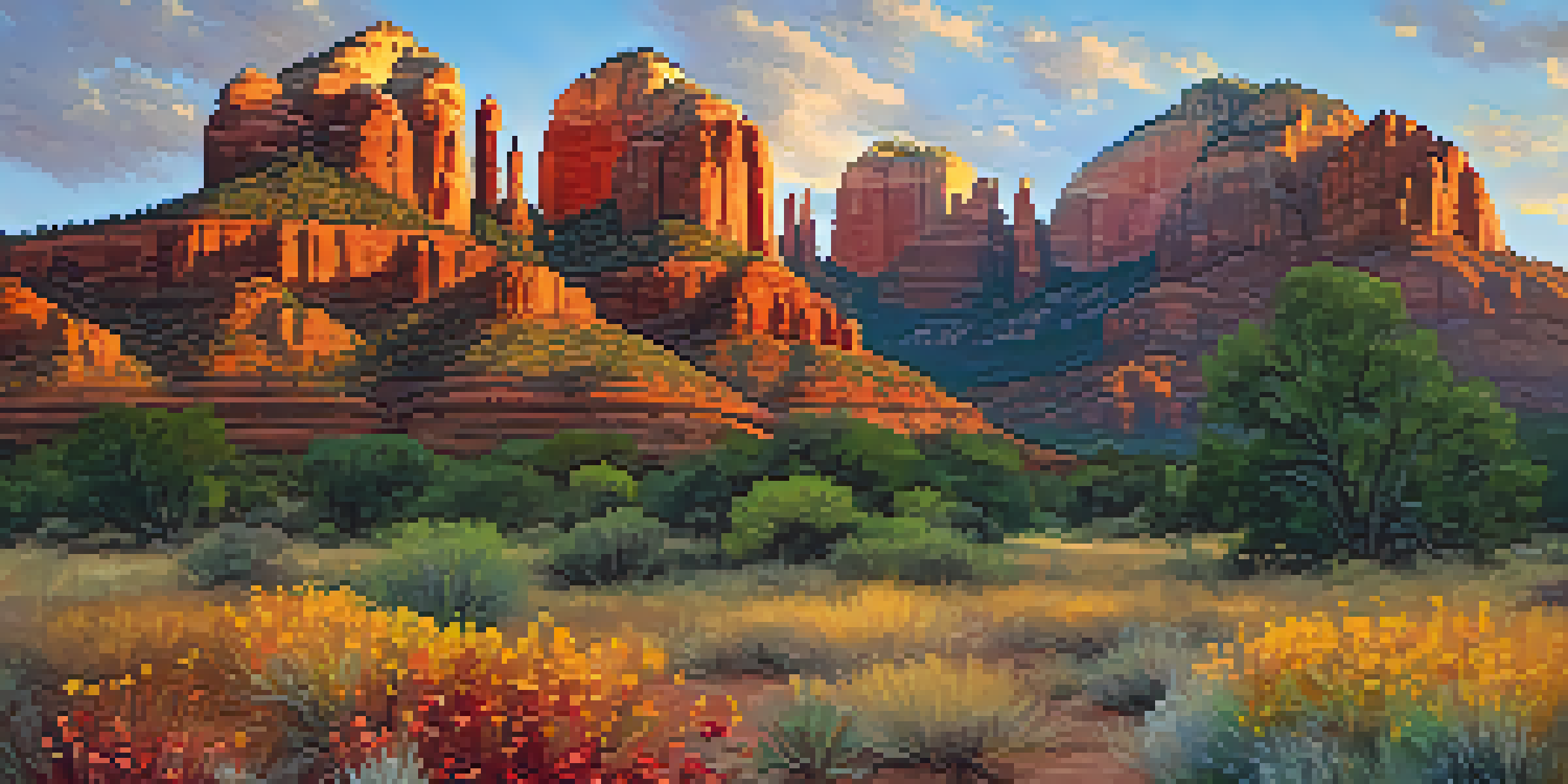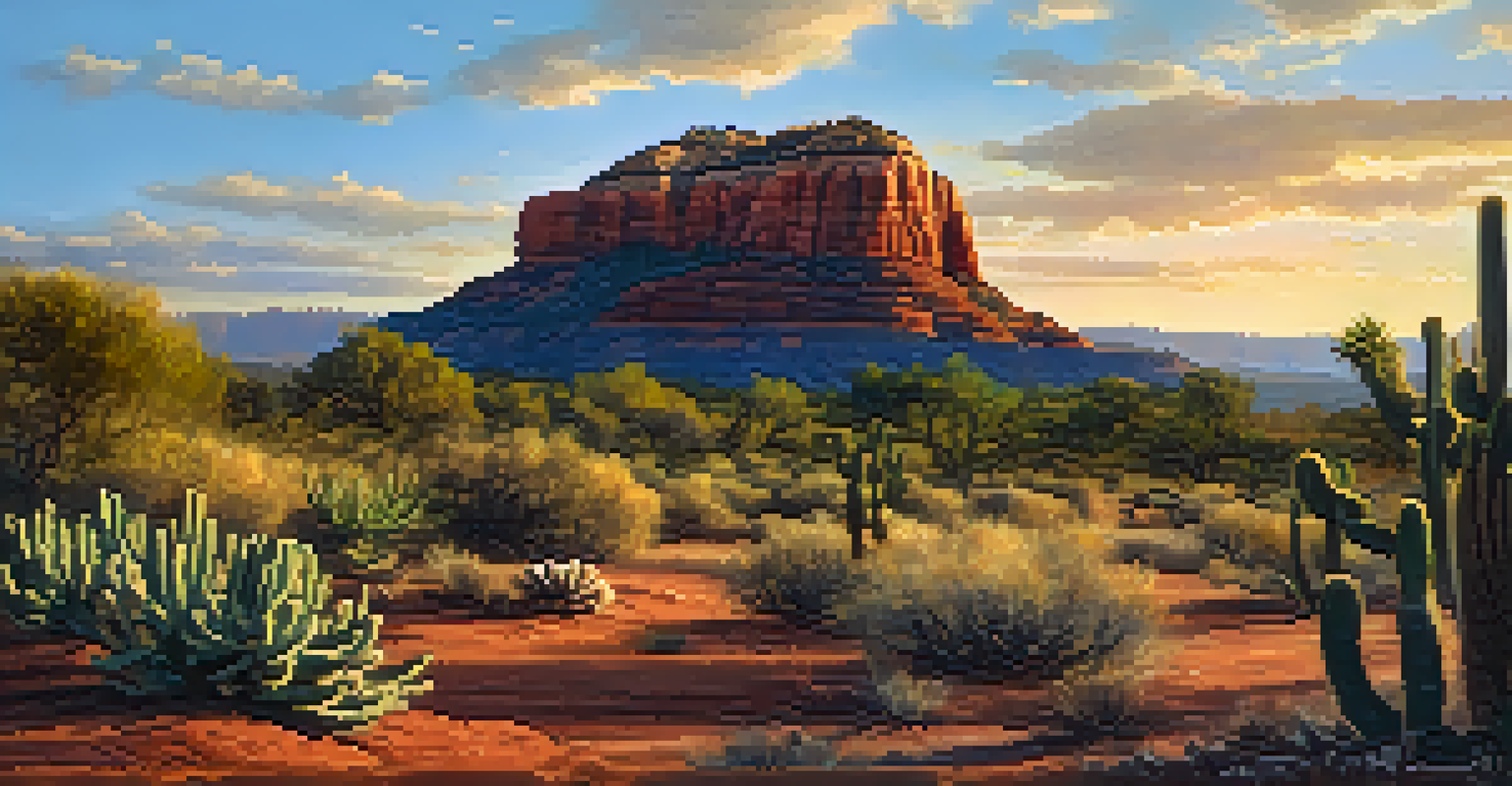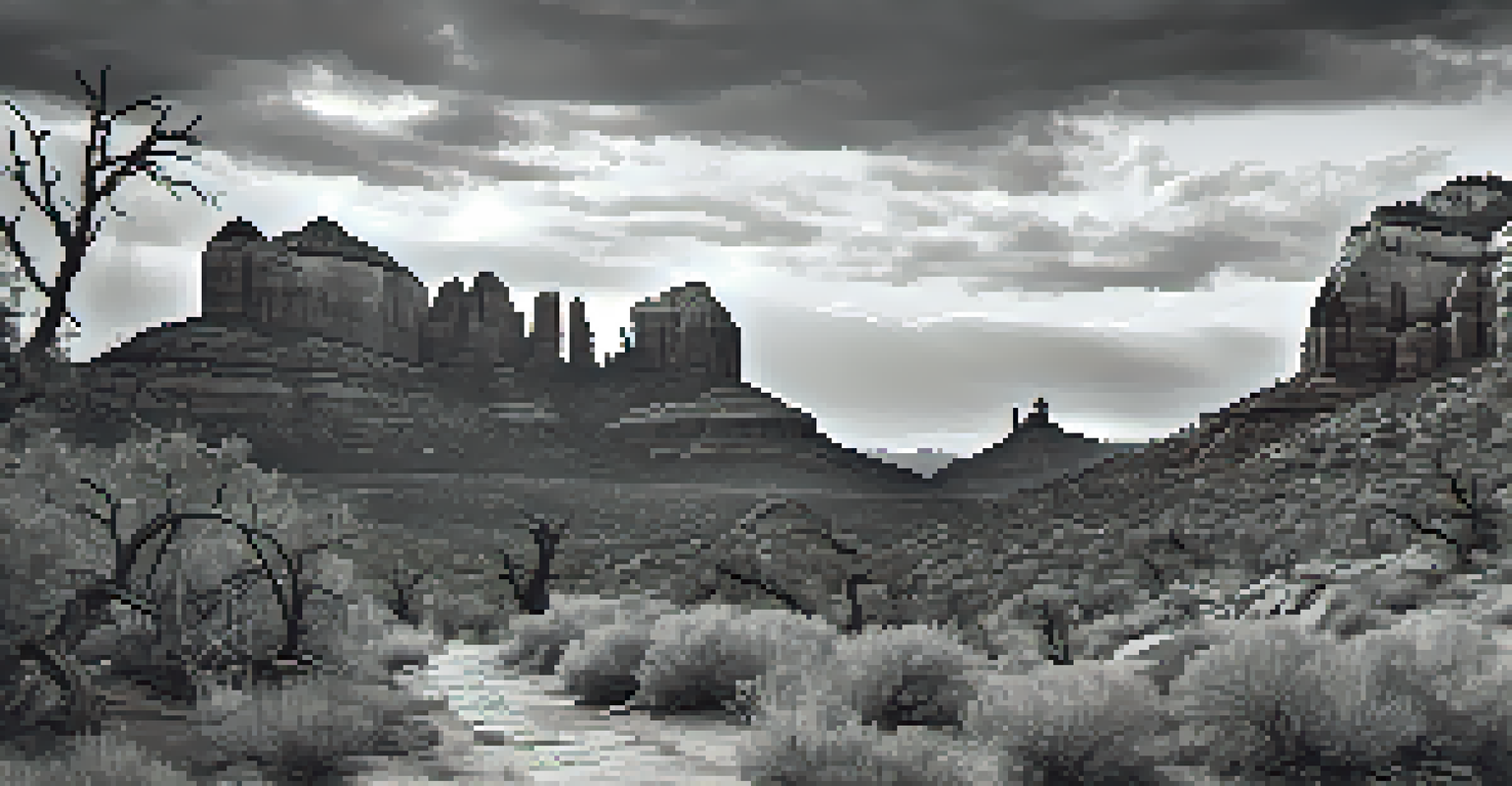How to Photograph Sedona's Unique Rock Formations

Understanding Sedona's Unique Geology
Sedona's rock formations are a visual feast, shaped by millions of years of geological processes. The vibrant red rocks, towering spires, and deep canyons create a stunning backdrop that photographers dream about. Understanding this unique geology can help you capture the essence of Sedona in your photos.
Photography is the story I fail to put into words.
The rich iron oxide in the rocks gives them their iconic red hue, especially striking during sunrise and sunset. This is when the light plays beautifully with the textures and colors of the rocks, offering the perfect opportunity for breathtaking shots. Knowing when and where to capture these formations can elevate your photography game.
Take a moment to appreciate the various rock formations, such as Cathedral Rock and Bell Rock, each with its distinct character. Learning about these landmarks not only enhances your appreciation but also informs your shooting strategy, allowing you to choose the best angles and compositions.
Best Times to Photograph Sedona
Timing is everything in photography, and Sedona is no exception. The golden hours—early morning and late afternoon—are ideal for capturing the stunning glow of the rocks. During these times, the softer light enhances colors and reduces harsh shadows, making your images pop.

In addition to the golden hour, consider the changing seasons. Each season brings different lighting and colors, from the vibrant greens of spring to the warm tones of autumn. Planning your visit around these seasonal shifts can add variety and depth to your photography portfolio.
Capture Sedona's Unique Geology
Understanding Sedona's distinct rock formations and their colors can enhance your photography skills and help you capture stunning images.
Don’t forget about the weather! Cloudy days can offer dramatic skies that contrast beautifully with the red rocks, while clear days provide bright, vivid colors. Staying flexible and adapting to the weather can lead to unexpected and rewarding photographic opportunities.
Essential Photography Gear for Sedona
Having the right gear can make a huge difference in your photography experience. A DSLR or mirrorless camera with a versatile lens will allow you to capture a wide range of compositions, from sweeping landscapes to detailed close-ups of rock textures. Don't forget to bring a tripod for stability, especially during low-light conditions.
The earth is art, the photographer is only a witness.
Filters can also enhance your photos. A polarizing filter is great for reducing glare and enhancing colors, making the reds pop even more. Additionally, a neutral density filter can help manage exposure during bright daylight, allowing you to use longer shutter speeds for creative effects.
Finally, consider packing extra batteries and memory cards. Sedona's stunning vistas might just keep you out shooting longer than you planned! Being prepared ensures you won’t miss capturing the perfect shot when inspiration strikes.
Framing and Composition Tips
Good composition is key to creating captivating photographs. The rule of thirds is a classic technique that can help you frame your shots effectively. Imagine dividing your image into nine equal parts with two horizontal and two vertical lines, and place your subject along these lines or at their intersections for a more balanced image.
Leading lines can also guide the viewer's eye through your photographs. Look for natural lines in the landscape, such as trails, rivers, or rock formations, to draw attention to your subject. This adds depth and invites viewers to explore the scene captured in your photo.
Timing is Key for Great Photos
Photographing during golden hours and considering seasonal changes can significantly improve the quality and vibrancy of your images.
Don’t shy away from experimenting with different perspectives. Sometimes, getting low to the ground or finding a high vantage point can completely change the dynamics of your shot. Exploring various angles can lead to unique compositions that stand out.
Incorporating Foreground Elements
Adding foreground elements can enhance the sense of depth in your photographs. This could be anything from wildflowers to interesting rock formations that lead the viewer’s eye into the main subject. By including these elements, you create a more immersive experience for your audience.
Consider using natural elements found in Sedona, like cacti or desert plants. These can frame your main subject beautifully and add context to the scene. Plus, they’ll help you tell a story about the environment in which the iconic rock formations reside.
Remember, the key is to ensure that your foreground elements complement rather than distract from the main subject. A well-placed rock or plant can enhance your photo without overwhelming the stunning backdrop of Sedona's red rocks.
Post-Processing Techniques for Stunning Results
Post-processing is where you can truly bring your images to life. Software like Adobe Lightroom or Photoshop allows you to fine-tune colors, contrast, and sharpness. Enhancing the vibrancy of the reds and adjusting the exposure can turn a good photo into a great one.
Don’t overdo it, though! The goal is to enhance your image while retaining its natural beauty. Subtle adjustments often yield the best results, preserving the authenticity of the Sedona landscape that you experienced in person.
Respect Nature While Shooting
Being mindful of local regulations and practicing Leave No Trace principles ensures that Sedona's beauty is preserved for future generations.
Consider experimenting with black and white conversions as well. The dramatic contrasts of the rock formations can create striking images that highlight textures and shapes in a way color sometimes cannot.
Respecting Nature and Local Regulations
As photographers, it's our responsibility to respect the natural environment we’re capturing. Sedona is not only visually stunning but also ecologically sensitive. Always stick to designated trails and avoid disturbing wildlife or vegetation to help preserve the beauty of the area.
Familiarize yourself with local regulations regarding photography, especially if you plan to shoot in protected areas. Some locations may have restrictions on commercial photography or require permits for certain activities. Understanding these rules ensures that you’re not only safe but also respectful of the land.

Lastly, leave no trace. This means taking your trash with you and being mindful of your impact on the environment. By being a responsible photographer, you can help keep Sedona beautiful for generations to come.